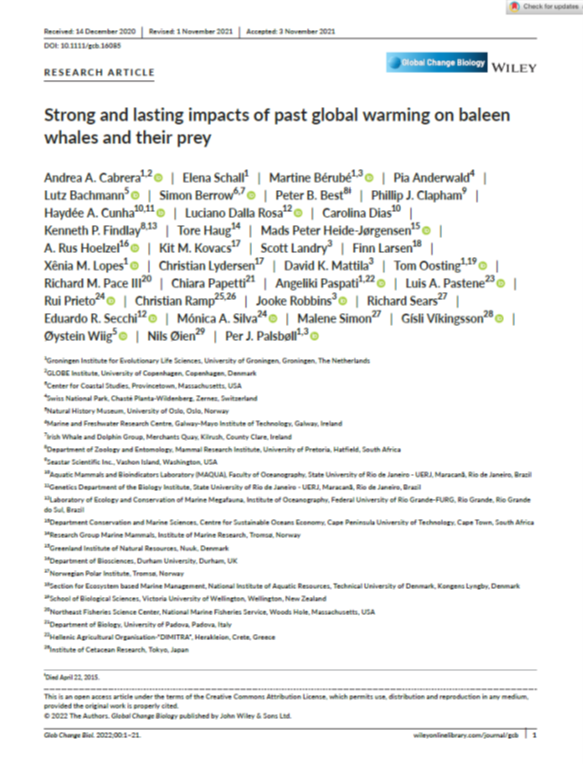Mucus: aiding elasmobranch conservation through non-invasive genetic sampling
| dc.contributor.author | Lieber, Lilian | en |
| dc.contributor.author | Berrow, Simon | en |
| dc.contributor.author | Johnston, Emmett | en |
| dc.contributor.author | Hall, Graham | en |
| dc.contributor.author | Hall, Jackie | en |
| dc.contributor.author | Gubili, Chrysoula | en |
| dc.contributor.author | Sims, David W. | en |
| dc.contributor.author | Jones, Catherine S. | en |
| dc.contributor.author | Noble, Leslie R. | en |
| dc.date.accessioned | 2017-03-20T15:27:45Z | |
| dc.date.available | 2017-03-20T15:27:45Z | |
| dc.date.issued | 2013-09 | |
| dc.identifier.citation | LIEBER, L. et al., 2013. 'Mucus: aiding elasmobranch conservation through non-invasive genetic sampling'. Endangered Species Research [Online]. September, p.215-222. Available at: http://www.mba.ac.uk/simslab/wp-content/uploads/2013/03/lieber-etal_sharkmucusgeneticsampling_esr2013.pdf | en |
| dc.identifier.other | Journal Article | en |
| dc.identifier.uri | https://research.thea.ie/handle/20.500.12065/241 | |
| dc.description.abstract | Large-scale genetic sampling by non-invasive methods is of vital importance for the conservation of vulnerable or elusive species. In the marine environment, non-invasive genetic sampling can provide a powerful alternative to conventional biopsies. We designed and implemented mucus swabbing for a free-ranging elasmobranch, thereby demonstrating the utility of this method in the field. We report the first attempt at mucus collection from 30 plankton-feeding basking sharks Cetorhinus maximus from 3 spatially distinct ‘hotspots’ in Irish waters. C. maximus DNA was successfully extracted and verified using DNA barcoding of the mitochondrial DNA cytochrome coxidase 1 gene (99% sequence similarity) and basking shark species-specific multi-plex PCRs derived from the nuclear ribosomal internal transcribed spacer 2 locus. Mitochondrial control region sequencing (1086 bp) showed that Irish samples were dominated by 2 haplotypes previously found to be globally distributed. Additionally, 1 novel haplotype was defined from western County Kerry. On-going genetic tagging will eventually provide more accurate estimates of global basking shark population structuring, abundance and behavioural ecology. | en |
| dc.format | en | |
| dc.language.iso | en | en |
| dc.publisher | Endangered Species Research | en |
| dc.relation.ispartof | Endangered Species Research | en |
| dc.subject | Fishes, Genetics | en |
| dc.subject | Sharks, Genetics | en |
| dc.subject | Sharks, DNA fingerprinting | en |
| dc.subject | Basking shark, DNA fingerprinting | en |
| dc.subject | Chrondrichthyes, Genetics | en |
| dc.subject | Animal genetics, Technique | en |
| dc.title | Mucus: aiding elasmobranch conservation through non-invasive genetic sampling | en |
| dc.type | Journal Article | en |
| dc.description.peerreview | Yes | en |
| dc.identifier.endpage | 222 | en |
| dc.identifier.startpage | 215 | en |
| dc.identifier.url | http://www.mba.ac.uk/simslab/wp-content/uploads/2013/03/lieber-etal_sharkmucusgeneticsampling_esr2013.pdf | en |
| dc.identifier.volume | 21 | en |
| dc.rights.access | Creative Commons | en |
| dc.subject.department | Marine & Freshwater Research Centre | en |



